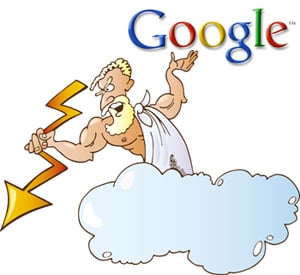 The simple fact is, on-page optimization doesn't necessarily rank first in the journey for top-10 rankings (#3 on our list). According to many SEO experts across the web, the process you may want to adopt for getting that coveted first position probably should look something more like:
The simple fact is, on-page optimization doesn't necessarily rank first in the journey for top-10 rankings (#3 on our list). According to many SEO experts across the web, the process you may want to adopt for getting that coveted first position probably should look something more like:
#1. “Crawl-ability” – Super-optimized, carefully crafted, otherwise amazing content that the search engines can't see, cannot be indexed properly. The Google “Gods” have passed down the following (and fairly straight forward) tip for making sure your site’s pages are “crawl-able”:
“URLs are like the bridges between your website and a search engine's crawler: crawlers need to be able to find and cross those bridges (i.e., find and crawl your URLs) in order to get to your site's content. If your URLs are complicated or redundant, crawlers are going to spend time tracing and retracing their steps; if your URLs are organized and lead directly to distinct content, crawlers can spend their time accessing your content rather than crawling through empty pages, or crawling the same content over and over via different URLs.”
Bottom line: Take advantage of your existing content by linking within your site using anchor text that highlights key words whenever and wherever you can. Most CMS’s (HubSpot, WordPress, etc) allow for doing so very easily.
#2. Content – By now you probably understand the need for compelling, high quality content that both attracts interest and encourages visitors to share your writing with others. This “virality” of content may be the single most important factor in how your pages are ranked, because it will produce the highest ratio of those who visit your page/post to those who actually link to it after viewing.
#3. On-Page SEO - Getting the keyword targeting right in your titles, URLs, and internal links, provides a significant SEO boost.
SearchEnginePeople.com has written a great post on SEO elements for success in 2012 that we would recommend taking a look at.
#4. User Experience - The overall usability experience provided by a website strongly influences the SEO credit it earns.
Much in the same way that other internal text links will help web crawlers to do their “thing,” an easy to use navigation structure with clearly labeled headings will make your site both easier for your readers and for Google-bots to find your content.
Similarly, keeping your site functionality “clean” and free of bulky Flash elements, for example, will also help users and search engines to quickly navigate your site.
#5. Marketing - Great content is certainly “key” to any Inbound Marketing strategy, but it is no substitute for great marketing. Filling your site with wonderfully thought out and optimized content is simply step-one. The sites that excel at building strong readerships are those who understand the importance of marketing these posts as well.
“Getting found” is often times (wrongfully) understood to be a passive endeavor. Perhaps understandably so, as writing reams and reams of optimized content can pull in a large number of readers over the course of a significant amount of time…time that most small and medium sized businesses can’t afford to wait.
So, get out there. Let people know about your very best content. Approach other bloggers about writing guest posts, perhaps even (gasp) test a PPC campaign; at least in the early days while you are building a strong following.
